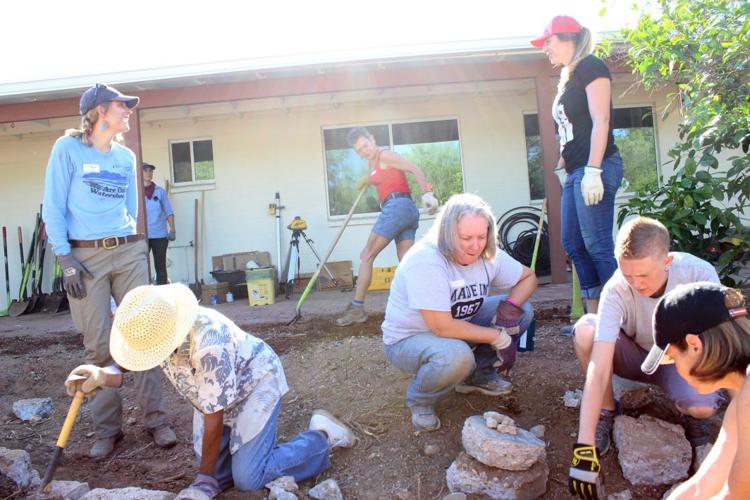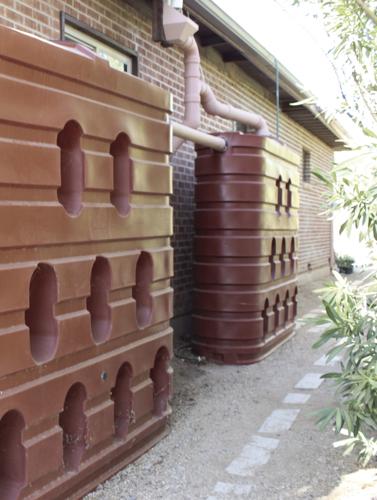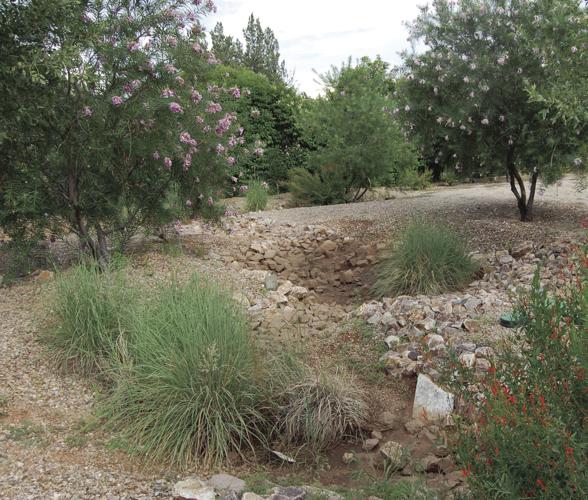Homes and businesses across the globe are using rainwater for a long list of purposes — car washes, gardening, showering — and Tucson is no exception.
Even rainwater beer exists.
Rainwater harvesting involves the collection of rain for use in activities that would normally require water from hoses or sinks. While the process is nothing new, it’s gaining popularity.
“Think of any city in the world,” Joaquin Murrieta-Saldivar, cultural ecologist with the Watershed Management Group, says. “Tucson, New York, Mexico City, Singapore, London. What are the sources of water? Usually it’s a river, lake or the aquifer, and that’s it. Why is it never the rain?”
Murrieta-Saldivar says on average, between 30 and 40 percent of residential water goes toward outdoor activities, such as gardening.
“Why not use the rain?” he says, adding that harvesting rainwater, thus minimizing other water usage, can help the environment and decrease your water bill.
Collected rainwater is often used for gardening and outdoor activities. However, when filtered, it can be used for drinking, cooking, and many other tasks.
“The more water we save, the better for the environment,” Murrieta-Saldivar says. “You can use rainwater for pretty much everything; it’s just a matter of what you want to do with it.”
And while rainwater harvesting helps conserve city water and allows rainwater to be used at its fullest potential, Watershed Management Group’s ultimate vision is more than that.
“The end goal is to restore rivers like the Santa Cruz,” Murrieta-Saldivar says. He foresees the Santa Cruz flowing in 50 years.
On a smaller scale, there are two ways for people to begin rainwater harvesting at home.
The first is with an active system — using a tank to store rainwater for future use. Since rain hits the roof of a home first, gutters are connected to a pipe that directs the rain into the tank.
When Tucson’s beloved monsoon ends and we’re in the middle of dry months, tank owners will still be able to conserve water by using the rainwater that was collected months prior.
Tanks vary in price — from hundreds to thousands of dollars — depending on size. Some can hold 50 gallons. Others can hold 10,000.
The Watershed Management Group has a rebate in place with Tucson Water to help lower the cost of a tank, in addition to other community programs to take advantage of. There are also cost-saving options available to low-income families.
The group also works with schools and organizations in Tucson.
“We want to make this affordable for everybody,” Murrieta-Saldivar says.
The second and more affordable way to harvest rainwater is with a passive system. And all you really need are basic yard supplies to set it up.
Homeowners can build “rain gardens” by creating depressions in the ground. This helps guide rainwater wherever you want it to go — such as the soil surrounding a tree.
In this way, the top of the tree is hit with rain, but it’ll also receive more benefits as the rainwater flows through the depressions, seeping into the soil. Plus, Murrieta-Saldivar says plants like rainwater better.
“Be observant of what the water is doing,” he says. “If it’s making puddles where you don’t want them, guide the water where you do want it.”
However, rainwater in a passive system can’t be saved for future use.
“You’ll have immediate rewards because you’re watering your garden,” Murrieta-Saldivar says. “You’re planting the water. Something will flourish or replenish the soil.”
He says that this system works best for native plants, though others still benefit. Non-native plants might still require hose water, though not as much when a passive system is in place.
Passive systems can also help guide rainwater that might be flowing down a street. This can help decrease the chances of roads flooding.
“It’s very nice to see different systems in action,” Murrieta-Saldivar says. “The celebration of rain once you have a system is amazing.”







